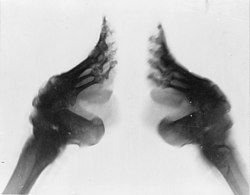
Made by Dirty Pomelo. Think that.(Talk about gender&society)
Is there a scientific difference between men and women? Think again? (DP·G&S-26)
What is the basis for what we know about differences between men and women?
This chapter explores the history of knowledge about differences between men and women, especially biological knowledge, through specific examples. Knowledge of the so-called differences between the two sexes that is taken for granted today was scientifically discovered and legitimately acknowledged, in fact not so long ago. This chapter will introduce how the knowledge of the two gender and sexual differences is formed, and in what social context such perceptions are formed. In addition, the context of gender politics can also be understood from knowledge diffusion to becoming a consensus belief among people. Following this understanding, we can try to understand the inequality between men and women in today's society.

Before formally discussing biological and social differences and the feminist critique of scientific myths and scientific beliefs that analyze biological and social differences, observe the so-called "biological differences: sex" and "social differences." Difference: the concept of "gender", a critical study of body-related knowledge.
Regarding the differences between men and women, feminists have proposed gender, that is, the concept of "socioculturality". In proposing the concept of gender, feminists criticize the existing knowledge and prejudices about sexual difference, and try to raise new questions about sexual difference. Simone de Beauvoir's sentence that women are created, not born, is often cited as oppressive as embodying this awareness of the problem. Much of the knowledge and belief about sex differences that have arisen primarily from the natural sciences (particularly biology) and experimental psychology assumes that differences between men and women are biological and intrinsic. Moreover, it is taken for granted that this difference "thus" creates unequal treatment in society. But this point of view is often criticized and questioned in the society.

Today's feminists accept that, although some are innate, they also newly propose that most differences are socioculturally formed . And distinguish the gender of "biological difference" and the gender of "sociocultural difference". In these claims, feminists critique existing knowledge about sexual differences and perverse institutional practices, while arguing that this can all be improved. The raising of these questions has caused considerable repercussions among the public. Academically, social science fields such as sociology or anthropology also widely accept that the explanation of social and cultural factors is the responsibility of their own division of science. "Gender" became a central topic of discussion about socialization or culturalization, and a major chapter in most of today's textbooks dealing with these topics.
It is the "socioculturality" that constitutes most of the differences between men and women that feminism or social science is responsible for its research or knowledge production. Even so, the remaining part of " biology " is still in the field of natural science. Because the former recognizes the territory of the latter, it is hoped that the latter will not infringe on the territory of the former. However, research on "biological" is different from the expectations of feminists and social scientists, and is considered to be the domain of "sociocultural".
For example, studies on fetal hormones and gendered brain formation that appeared around 1960 even believed that the typical "socioculturality" was "biologically determined" as early as the fetal period. That is, differences between men and women begin to take hold in the brain during fetal life, before the sociocultural influence of raising children. In addition to these arguments, countless studies of so-called "biological" also continue to generate knowledge that "sociocultural" events also have a "biological" basis.
In this regard, around 1980, feminists began to turn their attention to criticizing biological knowledge itself.

Donna J. Haraway once criticized feminism for not involving "biology" and only focusing on "socioculturality" as "two complementary ways in which feminism mythologizes scientific objects" (Haraway, 1991) is a complete rejection of science and technology , trying to develop a feminist social science that is completely unnatural science, another way is to make "nature" an enemy, and advocate the use of technology to control our "natural" body.
These two methods seem to be hostile to natural science and technology or completely exclusive, but both have one thing in common, that is, they only take natural science knowledge and technology as the premise, and do not take it as the object of analysis. Around 1980, a new trend in feminist research was to take natural science knowledge and technology as the object of analysis, rather than taking the given "truth" as the premise.
Along with the feminist critique of science, so will the critical study of body biology knowledge. The results show that scientific knowledge is not produced in a vacuum laboratory isolated from social influence, but its knowledge is produced in the space of social and cultural influence, and the knowledge thus produced reflects the context of social culture.

Emily Martin shows that the metaphors used to represent the body reflect contemporary socioeconomic conditions. (Martin, 1992/1987) Before the 18th century, the representative rhetoric for expressing the body was intake and discharge, and this expression had common application to both male and female bodies. With the advent of commercial capitalism, the economic components of consumption and accumulation began to make their debut.
Cell physiologist Patrick Geddes explains: "Male cells are mainly engaged in energy-consuming catabolism, and female cells are mainly engaged in energy-accumulating assimilation." As urbanization began in the early 20th century, the body also applied the city metaphor. Blood vessels are likened to roads, white blood cells are likened to angels in white, and nerves are likened to telephone lines. In the era of industrial capitalism, the metaphor of the factory also applies physically. While explaining digestion, pictures of food as it seems to go through its process along a factory conveyor belt are often brought up. In the late 20th century, with the advent of the information age and the development of molecular biology, words such as management or control were also applied to the body. The various organs of the body, the brain, and the biochemical reactions in between are described as "hierarchical information transmission systems"

Thanks to studies that treat the biological knowledge of the dialectical relationship between "sex" and "gender" as objects of critical analysis, rather than as endowed "truths," feminists have rediscovered the notion that "sex" and "gender" are not so much The two are strictly separated conceptually. Rather, we start to pay attention to the relationship between the two, and then pay attention to the dialectical characteristics of their relationship. It is not just that sex has only biological content, and gender has only social and cultural content beyond biology, but we have seen the mutual dynamic process in which social and cultural practices affect physiological differences, and this difference once again structures social relations.

For example, in a certain period, the size of Chinese women's feet cannot fail to mention the social habit of "foot binding". In addition, the difference in track and field records between men and women cannot tell when women participated in competitions, ignoring the history of the system, and only relying on the average power gap. It was only in 1984 that women were allowed to participate in the marathon, known as the flower of the Olympic Games. "Not only in the marathon, but also in track and field, men's records are slowly rising, while women's records are rising sharply, and the gap between men's and women's records is closing rapidly." In most cases, the distinction between the two factors is not the same as trying to establish a causal relationship together.

The setting of causality involves a desire to explain "origins." But attempts to pinpoint the "origins" of the present, which has changed over countless times and under multiple circumstances, have always been accompanied by the danger of overgeneralization. But we can still look back at our society, gender, and science itself in this speculative way.
See you next time!
Dirty grapefruit co-study series - Part 1 (Gender and Society) Chapter 4 - Part 1 (1-1-4-1)
——Made by Dirty Pomelo. Think that.

Hello, Dirty Grapefruit wants to study and think with you. Create a dynamic and friendly space for knowledge exchange.
Want to be together? Think about it! More channels please click! — bio.link/dirtypomelo
Hello, Dirty Pomelo wants to study with you. And create a vitality and friendly knowledge space.
Want to be together? Think that! For more Infos! - bio.link/dirtypomelo
一起来和脏柚子一起学习,思考。为创造有活力,友善的知识交流空间努力。
Comment…